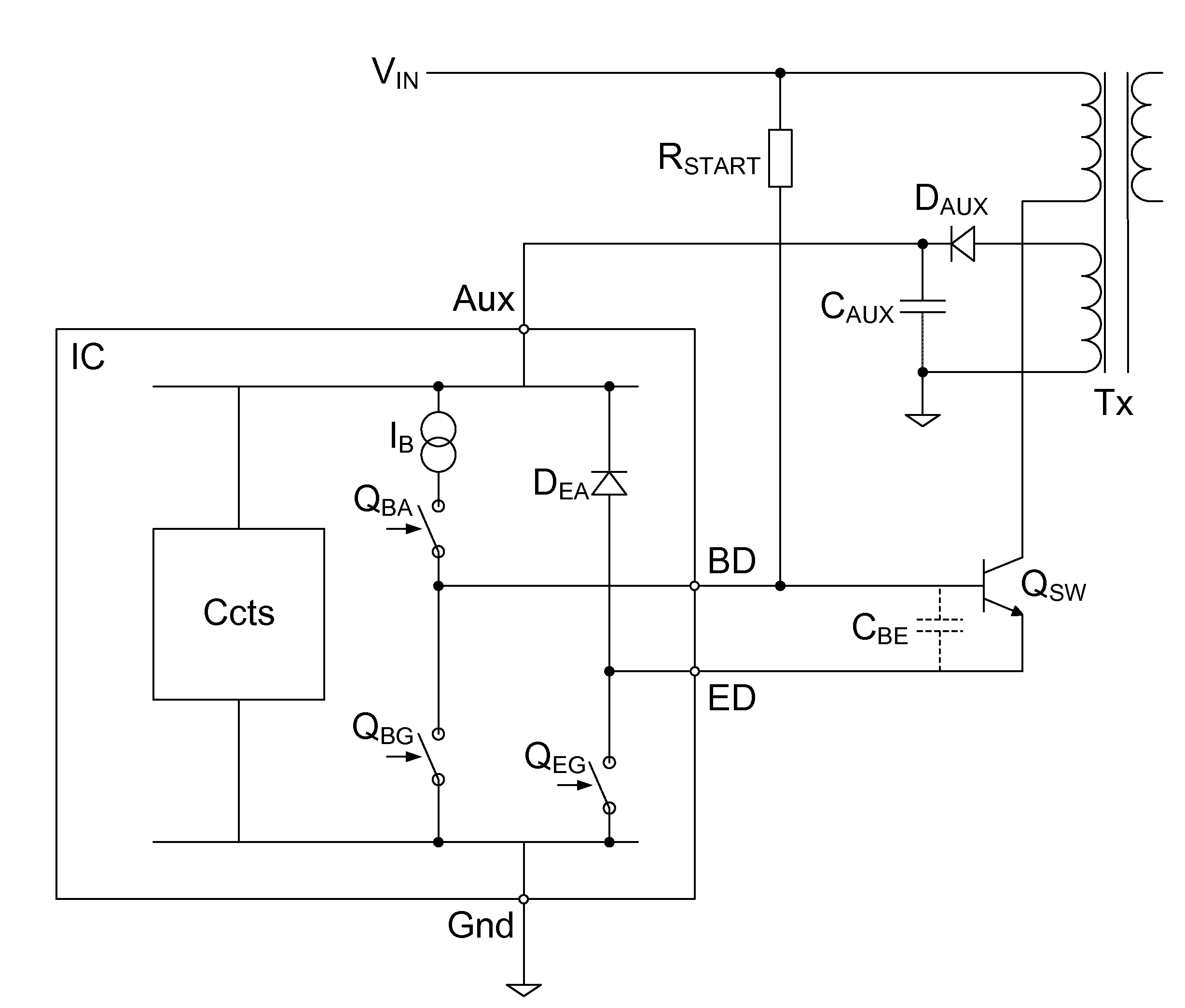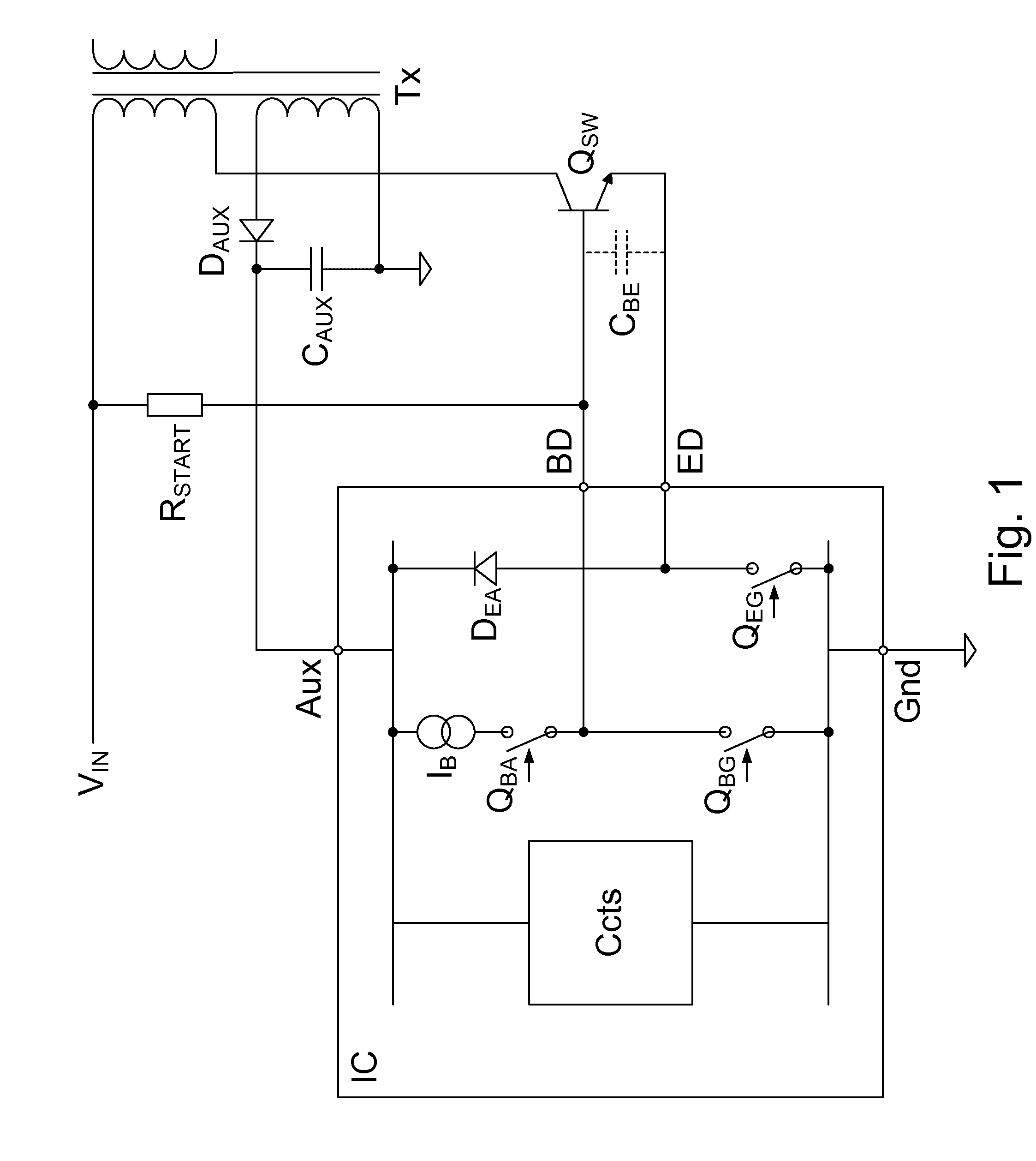Bjt drive scheme
a drive scheme and switch mode technology, applied in the direction of power conversion systems, dc-dc conversion, instruments, etc., can solve the problems of increasing power consumption, power converter failure to start, comparatively large reservoir of charge needed, etc., to reduce component count and/or cost, improve power efficiency, and reduce the saturation of bipolar transistors
- Summary
- Abstract
- Description
- Claims
- Application Information
AI Technical Summary
Benefits of technology
Problems solved by technology
Method used
Image
Examples
Embodiment Construction
[0049]An embodiment implementing supplementary base drive may allow a controller, which is for controlling switching of the primary switch of a converter using base and emitter drive for the switch control, to be used in higher power rating converters and / or with a lower gain primary switch. To reduce power dissipation in the controller IC, the embodiment supports base current from the auxiliary power circuit via a series circuit (e.g., resistor and diode connection) to supply supplementary base current from the auxiliary rail to the primary switch.
[0050]In a preferred embodiment, the series circuit may have a supplementary base drive (SBD) switch in the series circuit, the switch preferably inside and coupled to an external pin of a switching control circuit package. This SBD switch may be controlled to only turn on when the primary switch is being driven on (in a ‘Chg’ period). In an embodiment, a resistor of the series circuit, which resistor is external to the controller IC, may...
PUM
 Login to View More
Login to View More Abstract
Description
Claims
Application Information
 Login to View More
Login to View More - R&D
- Intellectual Property
- Life Sciences
- Materials
- Tech Scout
- Unparalleled Data Quality
- Higher Quality Content
- 60% Fewer Hallucinations
Browse by: Latest US Patents, China's latest patents, Technical Efficacy Thesaurus, Application Domain, Technology Topic, Popular Technical Reports.
© 2025 PatSnap. All rights reserved.Legal|Privacy policy|Modern Slavery Act Transparency Statement|Sitemap|About US| Contact US: help@patsnap.com



